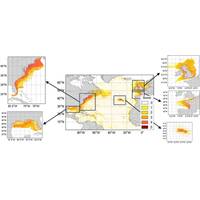
High-Risk Litter Zones Threaten North Atlantic Wildlife
breakage and disease in corals, and breakage in mangrove branches and roots. Smothering of corals and mangrove branches, roots or saplings by land-sourced plastic led to frequent mortality in corals, and a reduction in tree density in mangroves.Dr Sam Garrard, lead author of the study and Marine Ecosystem Services Researcher at Plymouth Marine Laboratory, said: “These findings highlight the potential of Spatial Risk Assessment analyses to determine the location of high-risk zones and understand where plastic debris monitoring and management should be prioritised, enabling more efficient deployment

Speaker Line-Up for Catch the Next Wave’s Return at Oi24
aims to spark new thinking and ideas across disciplinary boundaries and between sectors, taking a futuristic look at how key areas of rapidly evolving technology might help to achieve net zero and beyond, at the same time as supporting the restoration of the Earth’s essential biodiversity and ecosystem services.CTNW speaker and conference committee member Jyotika Virmani, said: “I have been part of Catch the Next Wave for many years and what I find fascinating and wonderful about Catch the Next Wave is that it is the only conference which pairs together what is happening in marine technology
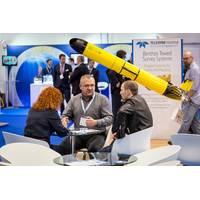
Discover the Future of Ocean Tech: Oi24 Event Registration Now Live
crisis. It will take a futuristic look at how key areas of rapidly evolving technology might contribute to innovative solutions at the ocean-climate nexus, helping to achieve net zero and beyond, at the same time as supporting the restoration of the Earth’s essential biodiversity and ecosystem services. Topics include: The Energy Transition; Climate Repair; Protecting the Earth’s Living Systems; Innovating the Ocean Economy of the Future
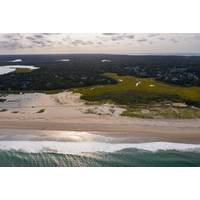
US Awards $6.7 Million for Sea Level Rise and Coastal Resilience Research
$500,000 to evaluate how different shoreline adaptation actions perform with sea level rise and storms in California.University of Rhode Island and Penn State University received over $360,000 to assess how nature-based solutions reduce coastal vulnerability to sea level rise while preserving ecosystem services in Rhode Island.(IRA-funded) U.S. Geological Survey and University of California Santa Cruz received over $324,000 to evaluate flood risk in linked coral and mangrove ecosystems in the U.S. Virgin Islands.NCCOS is also funding projects through annual appropriations to improve coastal community

NOAA to Award $28 Million to Tackle Marine Debris
debris requires coordination and collaboration with partners across the country, and we are excited to advance projects that support partnerships and solutions.”“These funding opportunities will support transformational projects that benefit our public trust natural resources and the ecosystem services that they provide,” said Nancy Wallace, director of the NOAA Marine Debris Program. “This funding from the Bipartisan Infrastructure Law will allow us to address the marine debris that is most challenging to remove and damaging to our waterways, ocean and Great Lakes.”The
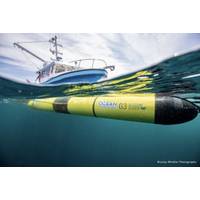
Marine Telemetry: Shedding Light Below the Waves
(OTN included) to share data, but to also identify what they call “orphan tags”—detections from outside their respective regions.Solving the PuzzleAquatic animals, as Samardzic put it, support global food security, contribute billions of dollars in socioeconomic benefits and ecosystem services, and have public and cultural significance. As the climate warms and oceans change, species are forced to migrate and adapt, and their subsequent behaviors and movement patterns hold critical importance in conservation and management. “I think it’s an amazing tool, at least for
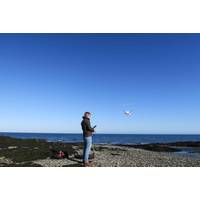
Blue Carbon Project to Study Marine Carbon Storage Around the Isle of Man
, both near the shore and in the deeper waters. The data generated from this exciting project will build an evidence base that could inform how the Manx territorial waters are managed to maximise carbon sequestration and storage, while maintaining and enhancing biodiversity and other important ecosystem services."Dr Claire Evans, Research Fellow at the National Oceanography Center, added: “By capturing carbon in the seabed, seawater and marine life, the ocean plays a key role in keeping it out of the atmosphere, thereby reducing harmful climatic change. This exciting project will provide
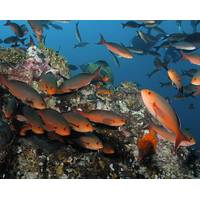
NCCOS Awards $1.7M to Support Habitat Connectivity Research in National Marine Sanctuaries
of how species use habitats, how habitats are connected, and how MPAs can benefit areas outside their boundaries. An improved understanding of species’ habitat requirements and ecosystem connectivity is needed to effectively protect critical habitats, manage human use, and preserve ecosystem services within MPAs.Working with the Office of National Marine Sanctuaries and the National Marine Protected Areas Center, NCCOS developed a funding opportunity to improve the ability of resource managers to address habitat usage and connectivity in MPA management plans. Three projects were selected
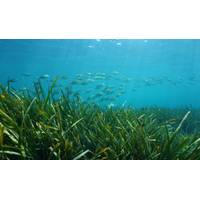
With ReSOW UK, Scientist target Seagrass Degradation
environment, providing a strong case study indicative of the social-ecological complexities in coastal environments of the UK. ReSOW UK will create a case study that transforms how we regard marine resources and how we move forward in the design and scaling-up of restoration strategies to enhance ecosystem services for the benefit of people and planet.”The research from ReSOW UK will provide vital guidance on reversing the trend of seagrass degradation and will further support the UK Marine Strategy by contributing to clean, healthy, safe, productive and biologically diverse seas, whilst also serving



 February 2024
February 2024





